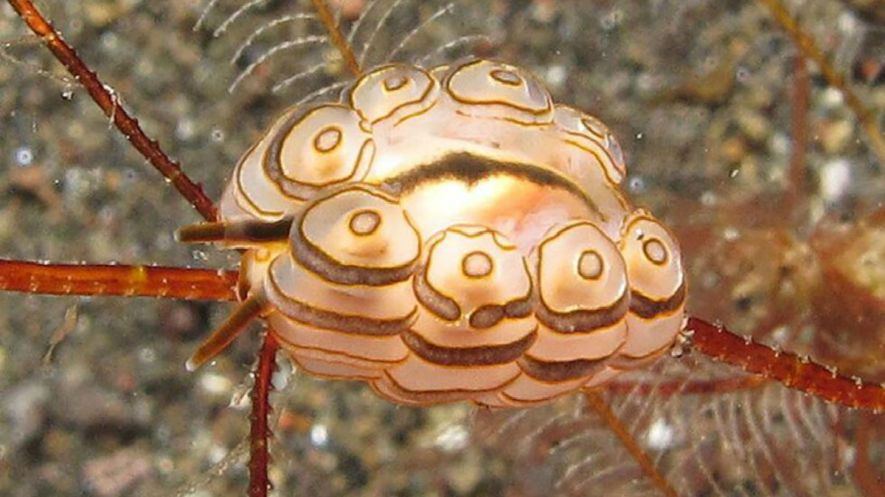In 2015, researchers at the California Academy of Sciences added 103 new plant and animal species to our family tree. The new species include two frogs, 26 fishes, nine sea slugs, two corals, and one water bear. More than a dozen Academy scientists—along with several dozen international collaborators—described the discoveries.
The scientists made their finds over five continents and three oceans, ventured into steamy rainforests and plunged beneath the sea, looked in their own San Francisco backyards and traveled to remote islands in Africa. Their results, published in 44 different scientific papers, help advance the Academy's mission to explore, explain, and sustain life on Earth.
“Biodiversity scientists estimate that we have discovered less than 10% of the species on our planet,” says Dr. Meg Lowman, the Academy’s Chief of Science and Sustainability.
Ocean highlights among the 103 species described by the Academy in 2015 included:
Nine newly discovered nudibranchs—vibrant sea slugs made famous by their poisonous adaptations and importance to biomedical research—from the tropical waters of the Philippines, the temperate seas of South Africa, and beyond.
Three of 2015’s new nudibranchs were discovered during the Academy’s late-spring expedition to the Philippines. This multidisciplinary expedition zeroed in on the Verde Island Passage—the veritable treasure trove of marine life nestled between the Philippine islands of Luzon to the north and Mindoro to the south. Though the Verde Island Passage houses wildly diverse marine habitats, Terry Gosliner, world-renowned nudibranch expert says one spot “shines like a beacon” for sea slug experts on the lookout for new species.
“This remarkable stretch of coral rubble was carpeted in colorful nudibranchs—we discovered more than 40 new species,” says Gosliner. “It was like an underwater Easter egg hunt. It was one of the most exciting scientific dives of my 50-year career.”
“Lost sharks” and an ancient fossil plankton-feeder
Academy Research Associate Dr. David Ebert is on a global search for the world’s “lost sharks”—the little known, or undiscovered, fishes overshadowed by a handful of high-profile charismatic species that only represent a fraction of the sharks in need of protection. Ebert travels the world, working with fellow researchers and students to discover and study these threatened marine species before they disappear forever.
In 2015, Ebert described a new ghost shark from New Zealand, a deep-sea (“dusky snout”) catshark from the southwestern Indian Ocean, and a new species of electric “torpedo” ray from the cool waters of the southeastern Atlantic.
The newly discovered electric ray— Tetronarce cowleyi—is a shiny black-topped, cream-bottomed predator that glides along the seafloor (seen at depths of nearly 500 feet), feasting on bony fishes and small sharks. Torpedo rays earn their names from a potent ability to stun or paralyze prey with an electric discharge from organs located on their heads.
“Torpedo rays have an amazing set of defenses,” says Ebert, who named the new species for Dr. Paul Cowley, a South African ichthyologist and frequent collaborator who assisted in the discovery. “These rays can discharge a powerful electric shock of 45 volts—enough to knock down a human adult!”
Dr. Douglas Long, Academy Research Associate, helped describe a previously unknown group of sharks—called Pseudomegachasma—that roamed the oceans approximately 100 million years ago. This fossil shark, dubbed the “False Megamouth,” is the oldest known plankton-feeding shark in the fossil record. For more information, click here.



